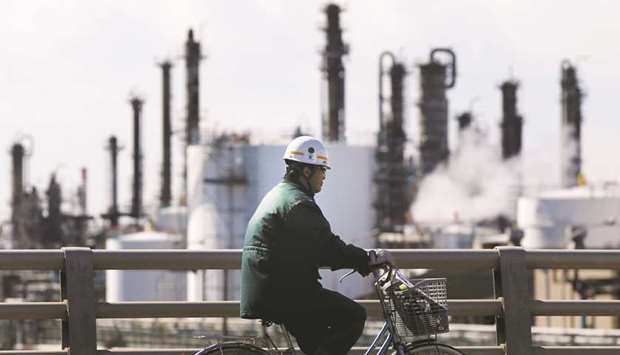Japan’s industrial production rebounded in February from a large decline in the previous month and companies forecast further gains in coming months in a sign that factory output is back on the path towards expansion.
Factory output rose 4.1% in February from the previous month, less than economists’ median estimate of a 5% increase but recovering from a revised 6.8% decline in January, trade ministry data showed yesterday.
The increase was led by higher output of cars, construction equipment, and semiconductors.
Gains in industrial output suggest that January’s weakness was temporary and the economy remains poised to extend its record growth streak due to solid exports and improving domestic demand.
One risk to the outlook is that Japan’s exports of steel and aluminium could weaken if it fails to win an exemption from US tariffs imposed last week.
“In the first quarter industrial output is likely to be flat or decline slightly,” said Daiju Aoki, regional chief investment officer at UBS Securities.
“However, we still expect exports to expand moderately, so weakness in the first quarter is likely to be temporary.”
Output of cars, engines, and car parts rose 10.3% in February, the fastest increase since April last year.
Production of construction equipment and factory machinery rose 3.6% in February, while production of semiconductors and electronic parts rose 4.8%.
Manufacturers surveyed by the Ministry of Economy, Trade and Industry (METI) expected output to rise 0.9% in March and increase 5.2% in April.
Japan’s government is lobbying the United States for exemptions from steel and aluminium tariffs that US President Donald Trump imposed last week.
Trump has temporarily excluded six countries and the European Union from the tariffs, but it is uncertain whether Japan will receive the same treatment.
Separate data released yesterday showed labour demand eased slightly and the jobless rate edged higher in February, but the labour market is expected to remain tight due to a shortage of workers.
The jobs-to-applicants ratio fell to 1.58 from 1.59 in January, which is the highest in 44 years. The jobless rate rose to 2.5% in February from 2.4% in the previous month.
Japan’s economy has grown for eight straight quarters, its longest continuous expansion since the 1980s bubble economy, moving Prime Minister Shinzo Abe’s revival plan a step closer to vanquishing decades of stagnation.
Consumer spending, exports, and capital expenditure have helped drive growth. Economists say consumer spending could lose some momentum this year but they expect exports to remain strong thanks to sustained global demand.

A worker cycles near a factory at the Keihin industrial zone in Kawasaki. Japan’s industrial production rebounded in February from a large decline in the previous month and companies forecast further gains in coming months in a sign that factory output is back on the path towards expansion.
